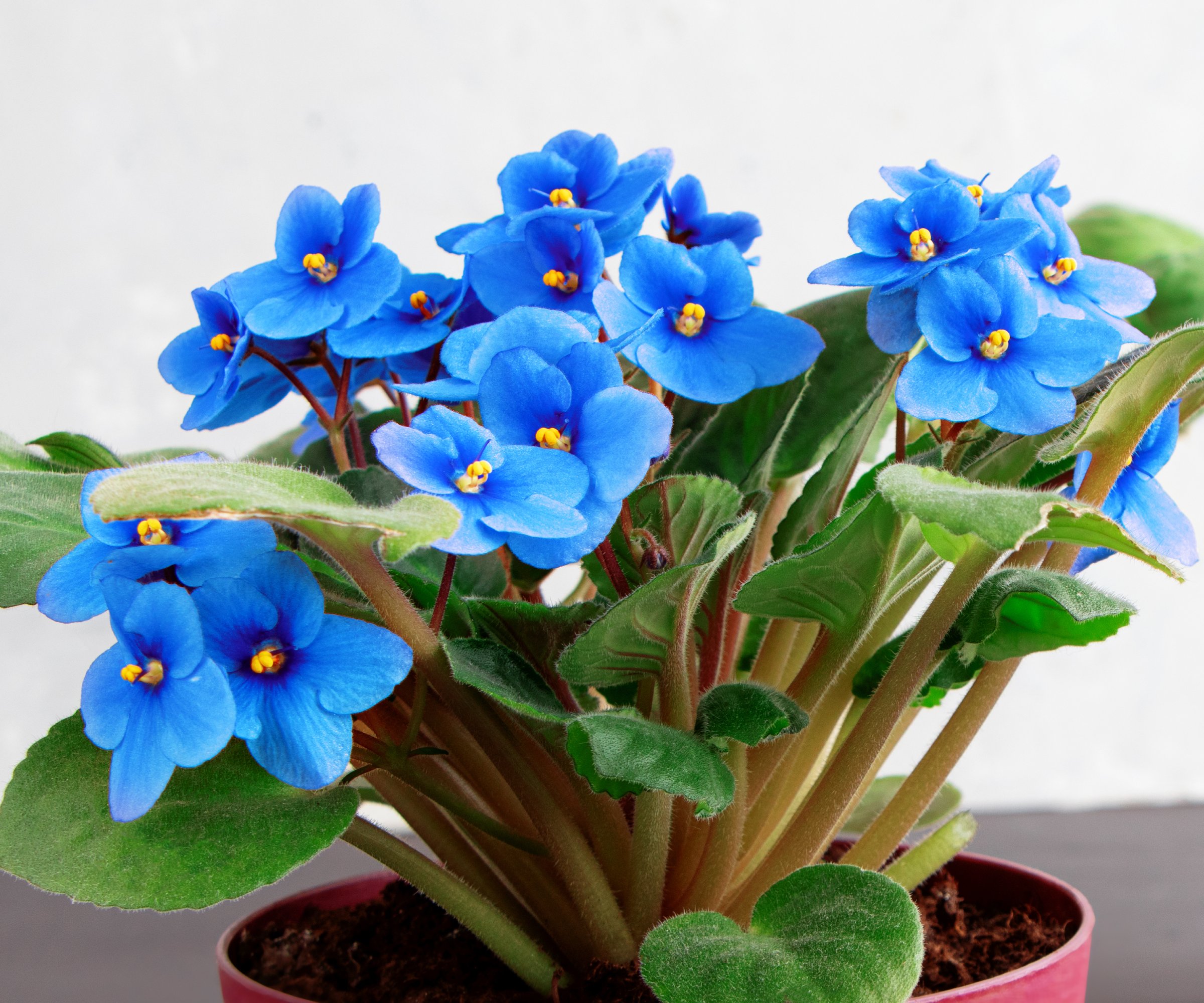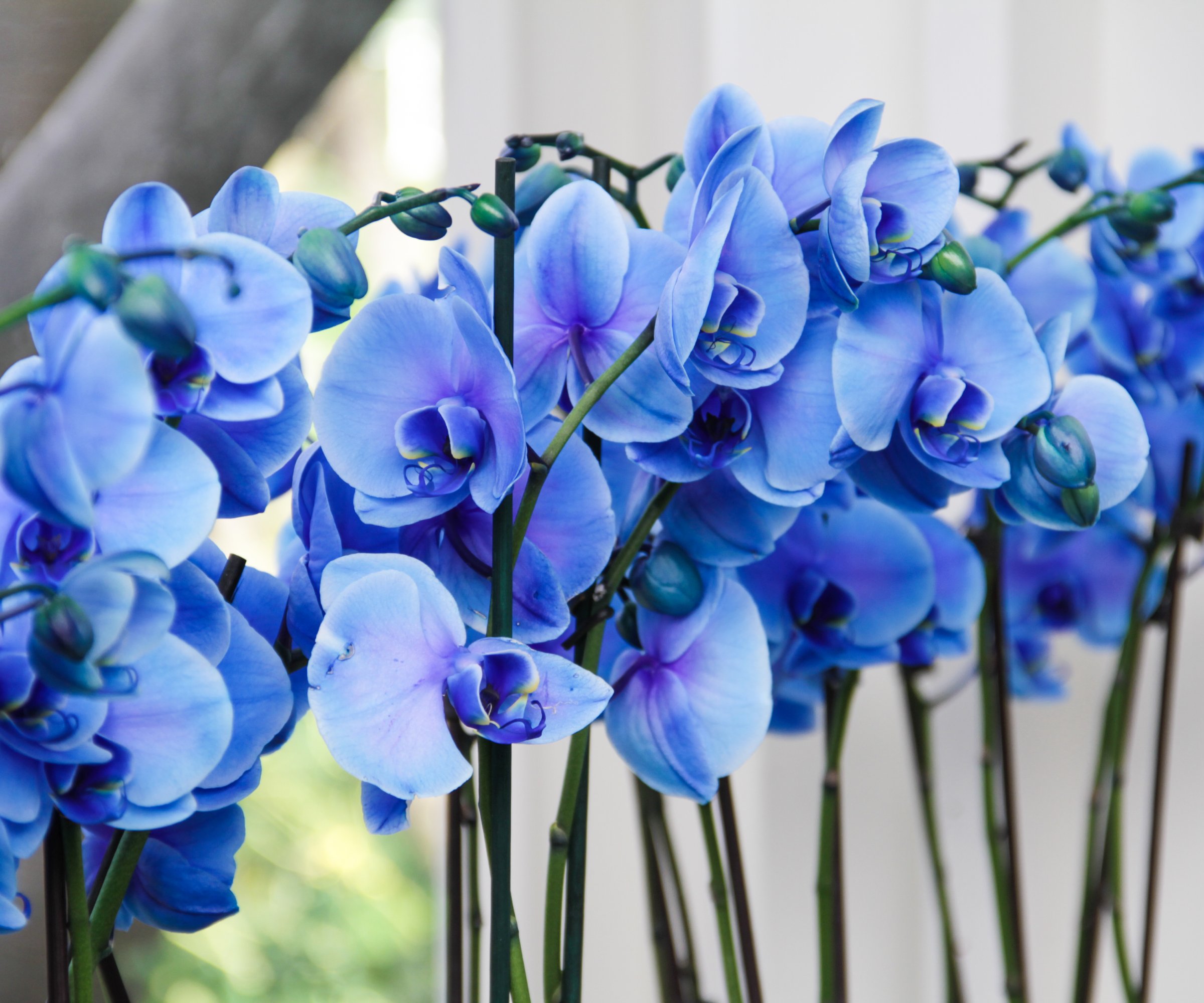Blue Indoor Plants To Beautify Your Collection: 8 Stunning Varieties To Try
Blue indoor plants? They do exist and will complement any interior with shades of blue foliage or blossoms. There may be more blue houseplants than you realize.

If the theme of your home decor revolves around blue, you might want to incorporate some blue indoor plants. The thing about true blue plants is that they are incredibly rare; less than 1 in 10 plants produce blue blooms. Even rarer still would be a blue leaf houseplant.
But just because blue houseplants are few and far between, doesn't mean you're out of luck when it comes to blue plants indoors.
Beautiful Blue Houseplants
Here are our top 8 blue indoor houseplants to accent your cerulean home.
1. Pothos Cebu Blue

A rarity among a very common type of houseplant is the pothos Cebu Blue. Unlike other pothos, Cebu Blue has silvery-blue deeply incised heart-shaped leaves. Also known as the Dragon Tail plant or Epipremnum pinnatum, this climbing evergreen is native to Southeast Asia.
If you can find it, this pothos can be grown as a trailing specimen or up a pole. Like other pothos, it is easy to care for. It prefers bright indirect light but tolerates medium light and rich, well-draining soil.
2. Hyacinth

Every year in the dead of winter I force the cheery blue bulbs of hyacinth. Hyacinth comes in a variety of colors but for the blue hues look for Blue Jacket or Delft Blue. While these beauties are common spring bulbs, they can be forced indoors after a chilling period of 12-16 weeks. I find the refrigerator to be the ideal place for chilling.
Once their chilling period has ended, simply plant them in well-draining potting soil, making sure to leave a bit of the bulb sticking out of the soil. You should have gorgeous, sweet-smelling flowers within 3-4 weeks.
Sign up for the Gardening Know How newsletter today and receive a free copy of our e-book "How to Grow Delicious Tomatoes".
3. African Violet

One of the most commonly grown flowering houseplants, African violets are available in not only blue but a variety of colors as well as various leaf and flower types. African violets are picky regarding the amount of light they receive; settle for north or eastern exposures.
They are also finicky when it comes to water. Watering these beauties is the most difficult part of their care. Water the plant at the base of the container using a wick or simply place the container on a saucer of water and allow the plant to soak it up. Whatever you do, don't get water on the foliage, and be sure to use room-temperature water to avoid shocking them.
4. Blue Snake Plant

Snake plants are another low-maintenance, very popular houseplant but did you know it has some blue varieties? In fact, there are several “blue” snake plant varieties available such as Ice Blue, Robusta Blue, Great Blue and Silver Blue. They can be grown and treated like common Sansevieria (now Dracaena) varieties. They tolerate low light, are drought tolerant, and survive in an array of temperatures.
5. Agapanthus

A conundrum of a plant, Agapanthus has been classified from one family to another until it has finally settled on being a member of the Agapanthaceae family, a relative of amaryllis.
Generally, this plant is seen growing outside, but dwarf or evergreen varieties are available that work well in containers giving the interior a dramatic pop with their glossy green, strap-like leaves even their blue bell-shaped blooms aren’t present. Grow Agapanthus in bright light with average home temperatures.
6. Blue Echeveria

Who doesn't love a succulent? There are so many colors, shapes, and textures including a blue succulent, Echeveria secunda, or blue Echeveria. A member of the stonecrop family, this little succulent grows in a rosette that gets about 6 inches (15 cm) across accompanied by a one-inch (2.5 cm) yellow flower in the summer.
In warm regions, this succulent can be grown outdoors in rocky areas or it can be grown indoors in well-draining succulent soil accompanied by bright light. Take care not to overwater blue Echeveria as it is prone to root rot.
7. Blue Star Fern

Ferns are common fixtures in many homes but the blue star fern is a little extra with its muted blue-green fronds. Blue star fern (Phlebodium aureum) is a creepy variety of fern that can grow up to (1 m) in height.
An easy-to-care-for plant, the blue star fern thrives in low light conditions that other plants can't tolerate. Like other ferns, the blue star enjoys high humidity conditions and will relish regular misting.
8. Blue Orchid

Are there really blue-colored orchids? Well, yes and no. Blue is not a color of orchid found in nature, but it could be found in your living room. Let me explain.
Blue orchids are actually white orchids, generally moths or Phalaenopsis orchids, that have been dyed blue. Regardless of their color, care for a blue moth orchid the same way you would any other. Place it in indirect bright light, water weekly during the growing season, and keep the humidity around 40%.
This article features products available from third-party vendors on the Gardening Know How Shop.

Amy Grant has been gardening for 30 years and writing for 15. A professional chef and caterer, Amy's area of expertise is culinary gardening.

